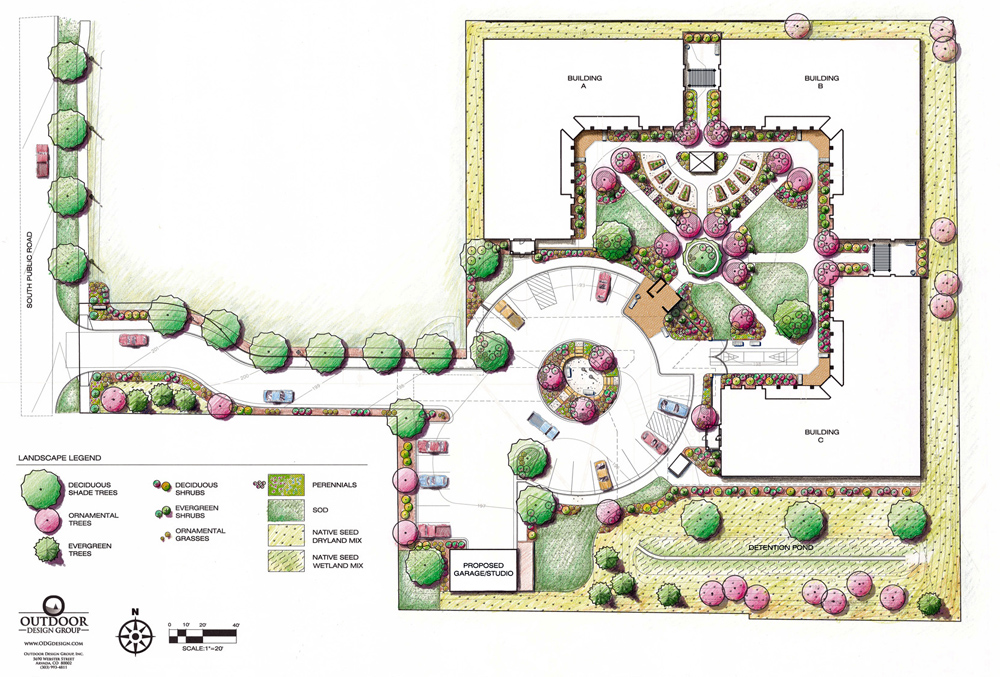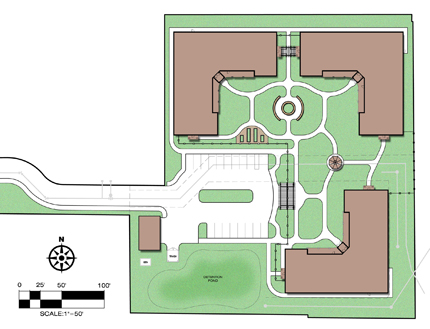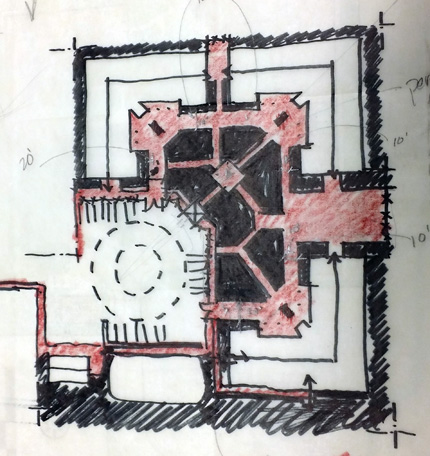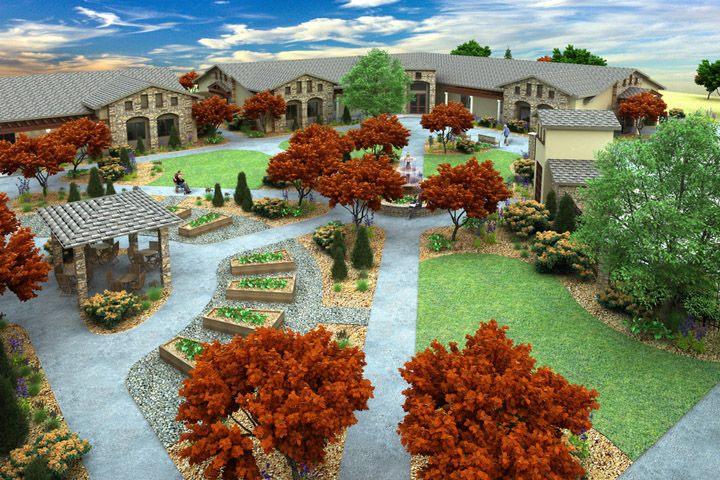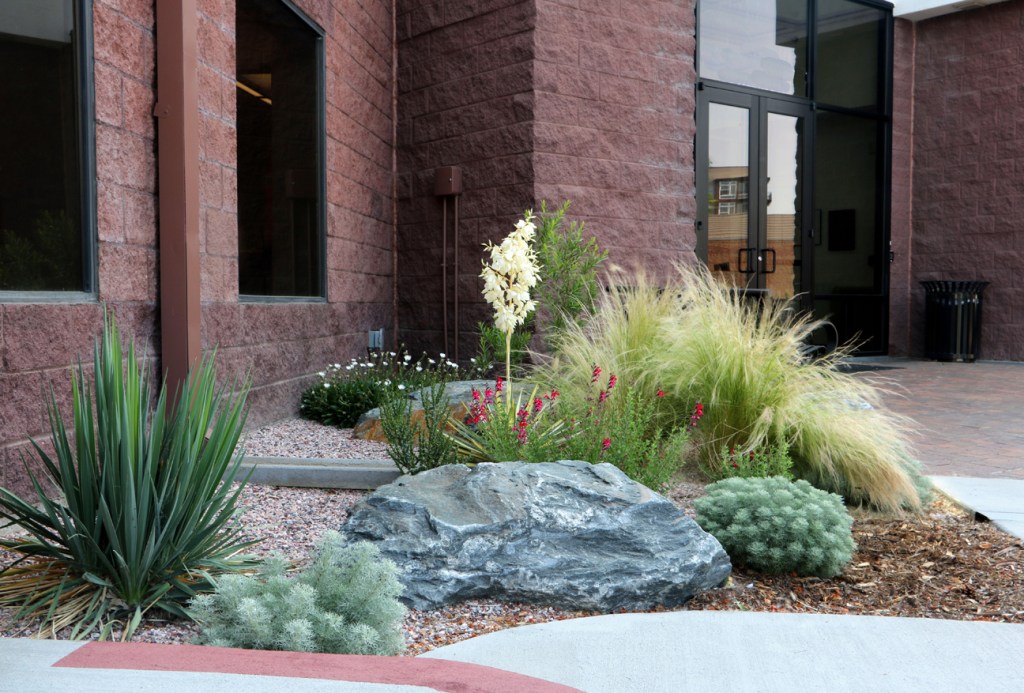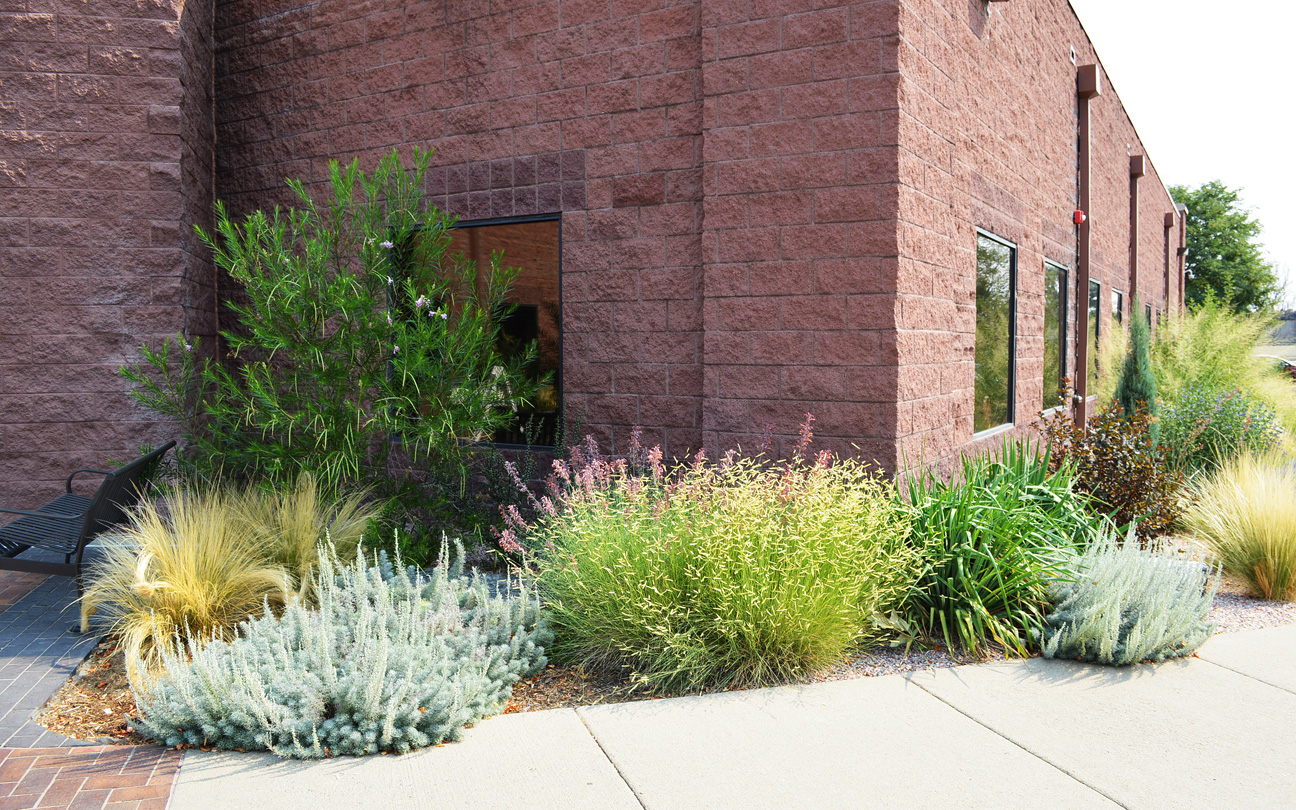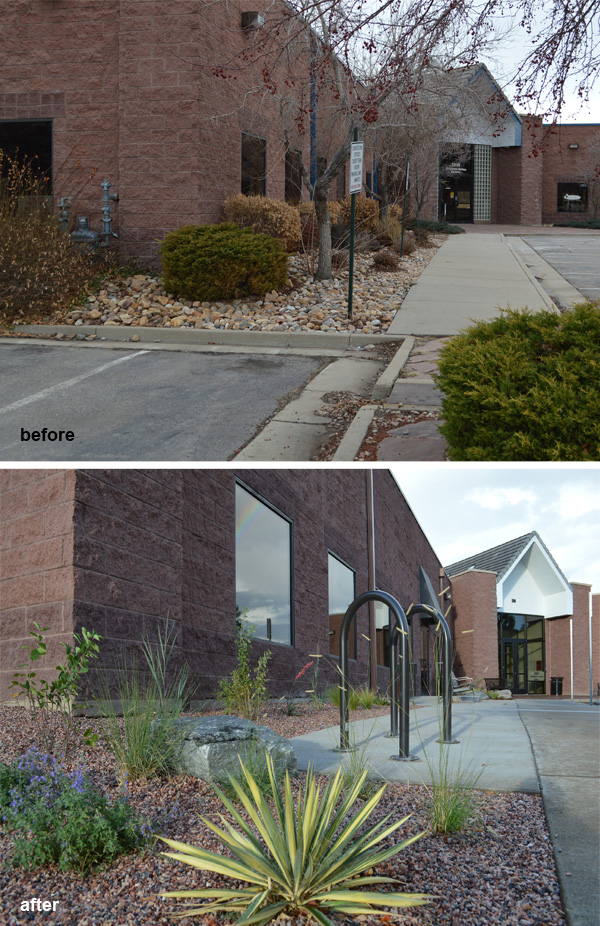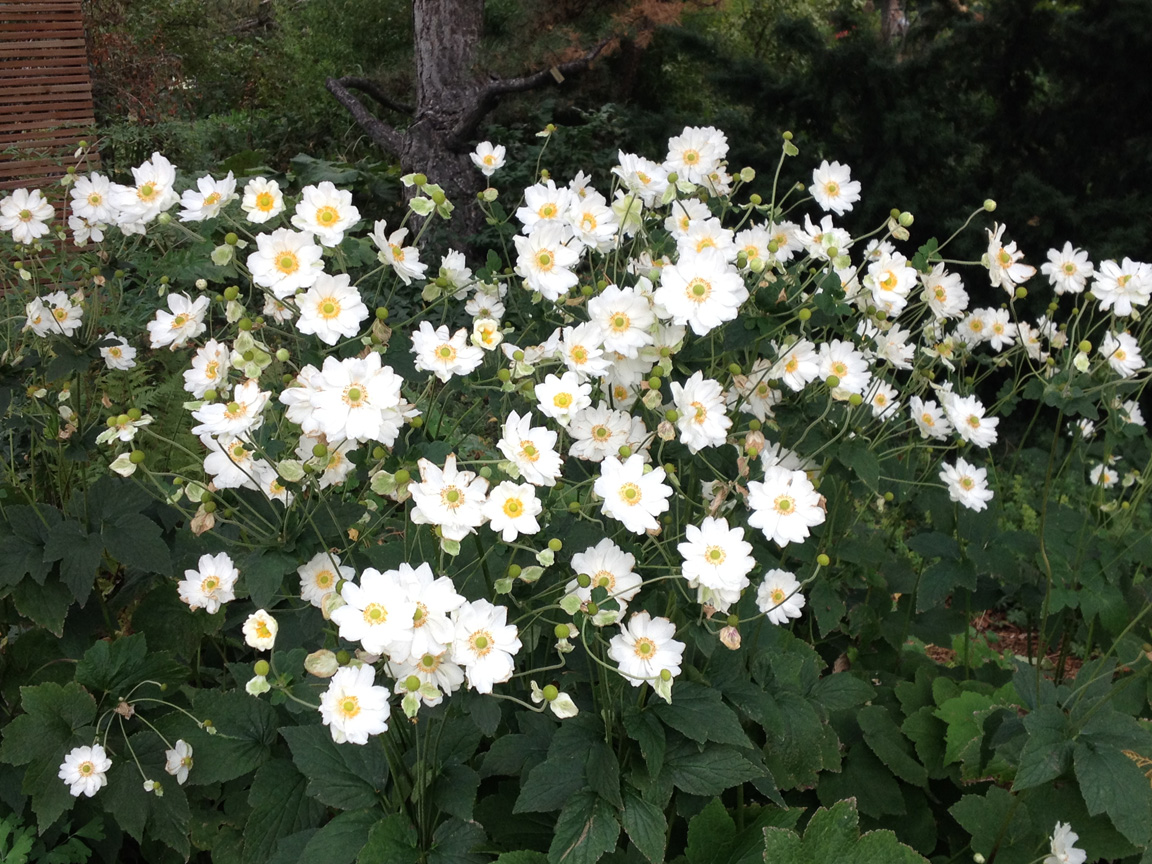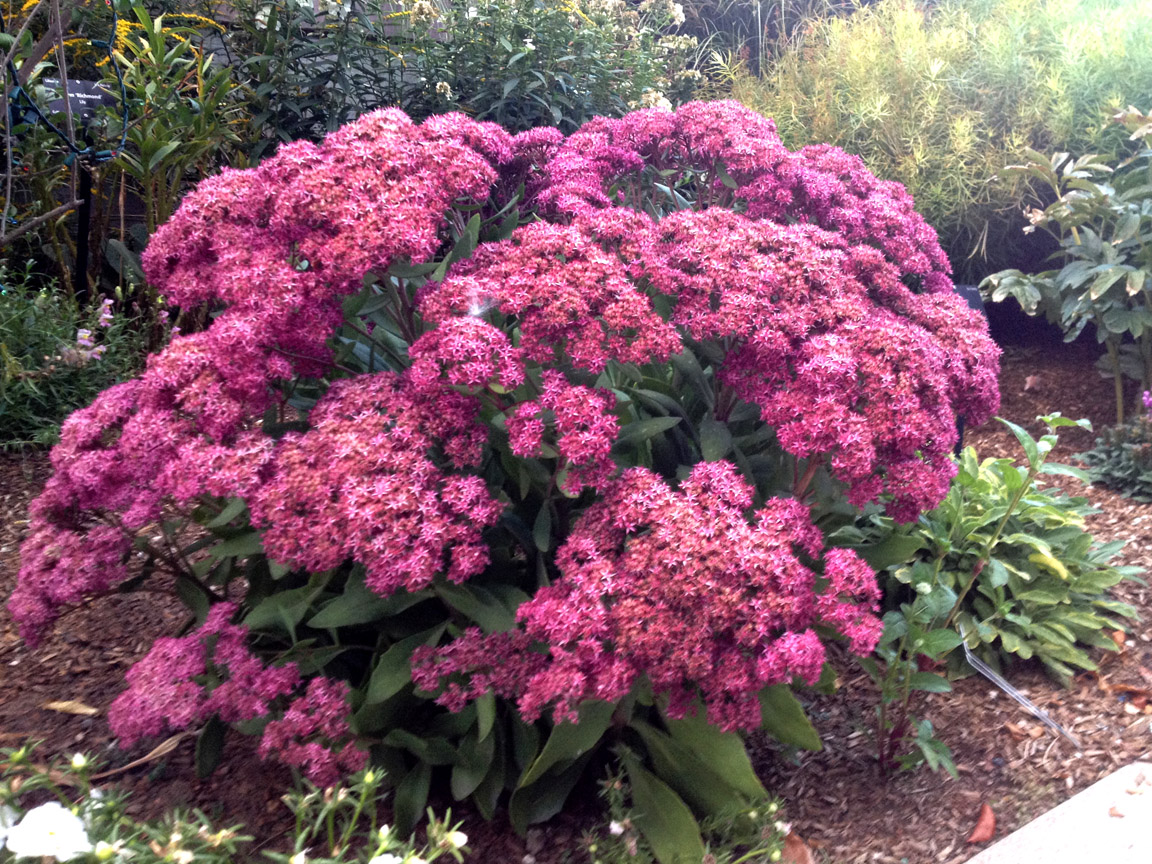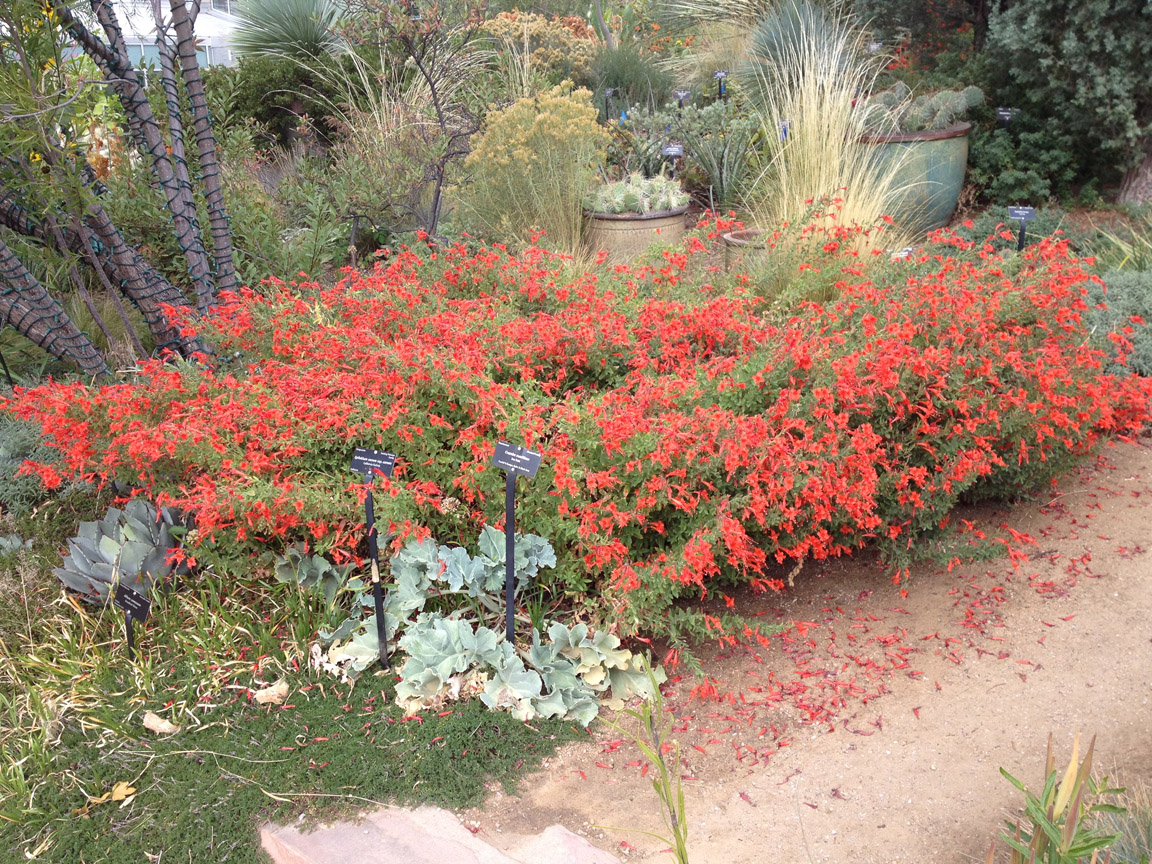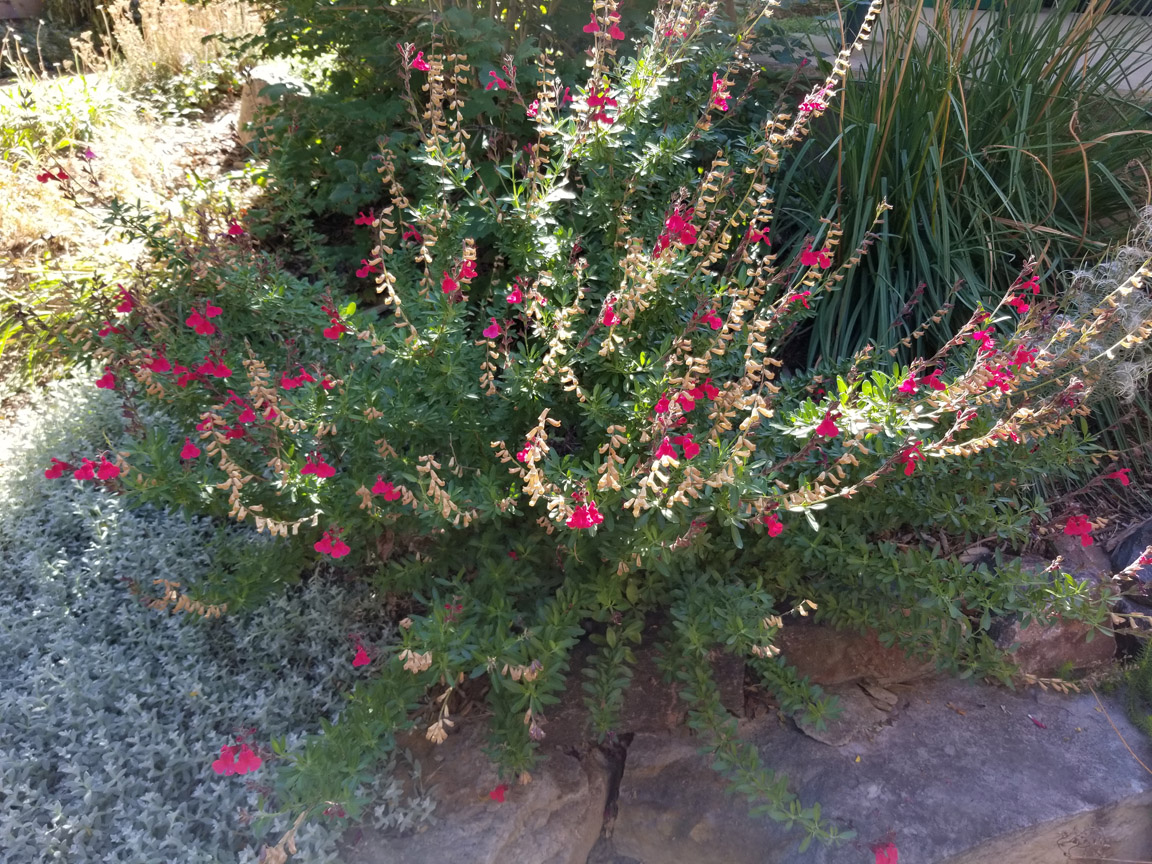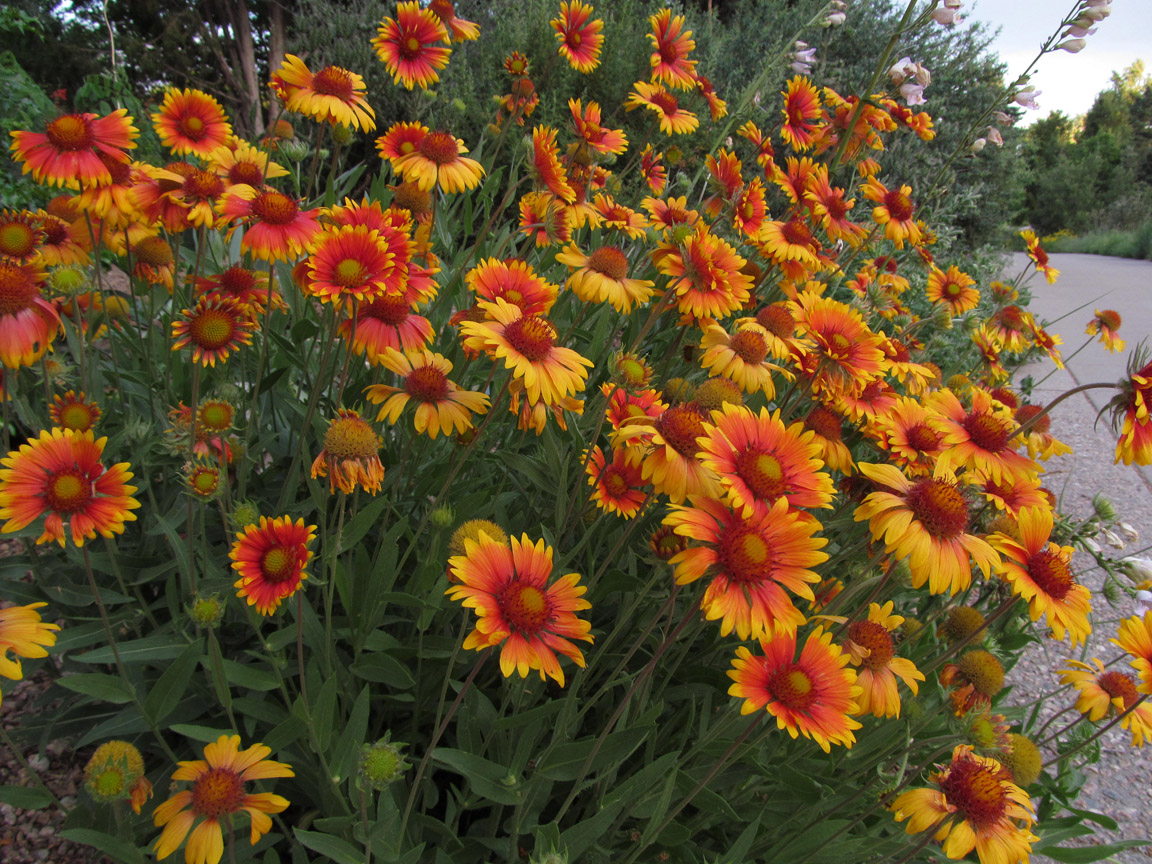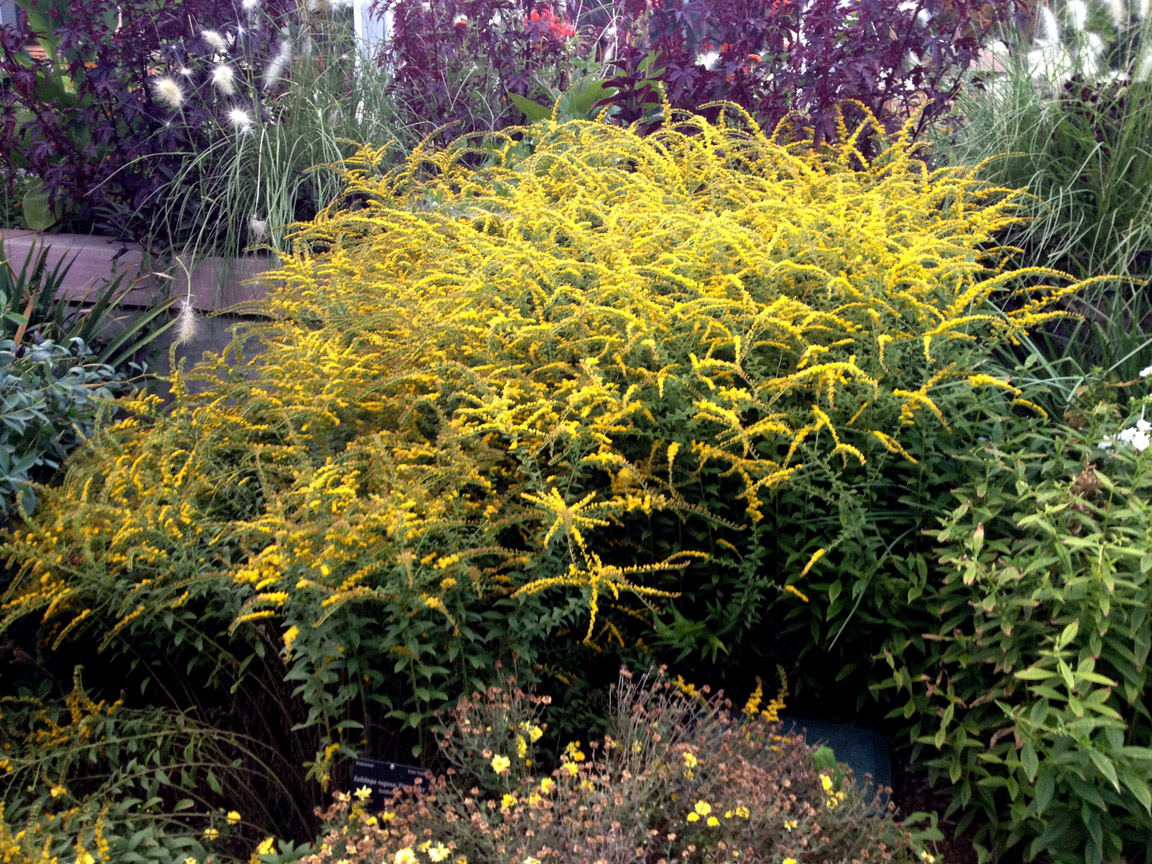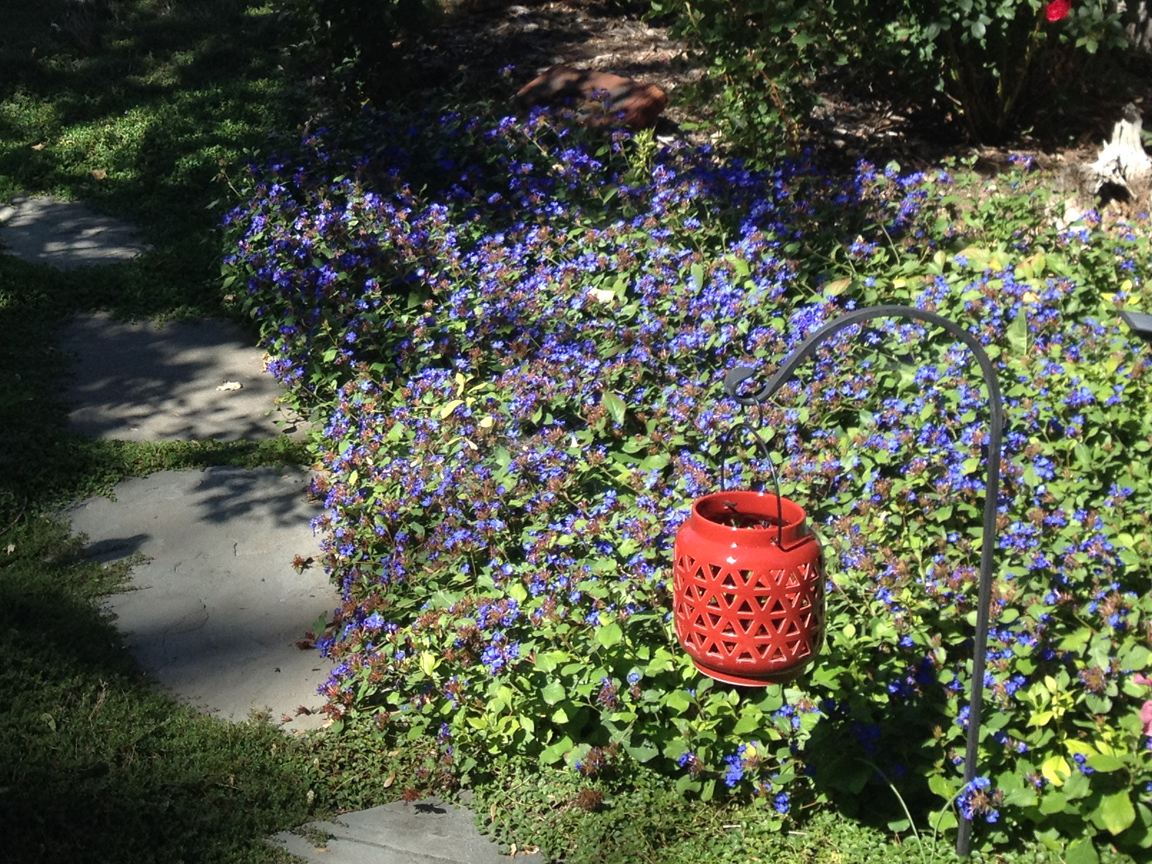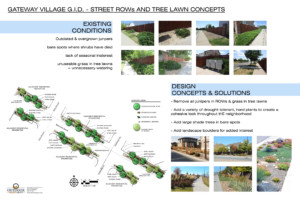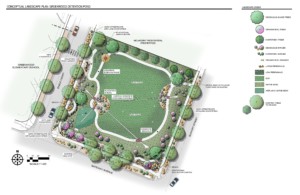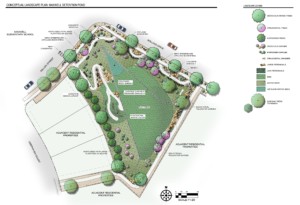Project Highlight: Church Landscape Addition & Renovation
In 2016, the congregation of Saint Francis of Assisi Catholic Church in Longmont, Colorado decided to expand their existing building to better serve their growing congregation. The proposed addition to the existing building would impact the existing landscaping, so our company was hired to design the renovation and adjustments of the landscape around the building.
The remodel of the building will be done in multiple phases. So far, phase 1 of the renovations has been constructed.

Like many church construction projects, this one had to be cost conscious. Due to budget constraints and various budget reviews, the proposed plantings were adjusted several times during the planning stages to best fit the current needs of the budget.
One particular technical challenge was the assessment and modification of the existing irrigation system and pumps. Our irrigation specialist was dispatched to the field multiple times to work with the Church’s maintenance crew to puzzle out the best way to adjust and modify the existing irrigation system. In the end, we were able to bridge the new and existing irrigation systems into a cohesive whole.
From a planting design perspective, the client had a few key points they wished to address: Blend new and existing plants seamlessly; create a low maintenance & low water use landscape; and add seasonal focal points to pair with the liturgically appropriate seasonal milestones that are critical to the Church.
Our team worked with the Church’s maintenance team to ensure the plantings and other landscape elements would be low maintenance. Hearty and reliable plant species were chosen for the design. We also wanted the new plantings to blend seamlessly with the existing landscaping. In addition to these criteria for the plants, we also ensured the plantings in the expanded parking lot would not obscure any critical sight lines for pedestrian and vehicle safety.
To create seasonal focal points, we considered different plants that might be at their peak during significant seasonal holidays. One good example of this is forsythia shrubs with their glorious yellow blooms that appear close to Easter, a very significant holiday in the Catholic Church. Not only are the seasonal focal points a visible manifestation of seasonally significant biblical events, these planting nodes provide attractive backdrops for photo opportunities during church sponsored events such as weddings.
Working on the landscape renovations for the Saint Francis of Assisi Catholic Church was a wonderful experience for our design team. It was satisfying to help the Church achieve their landscape design goals for their congregation and stay on budget.
This is the official blog of Outdoor Design Group, Colorado Landscape Architects. For more information about our business and our services, click here.

